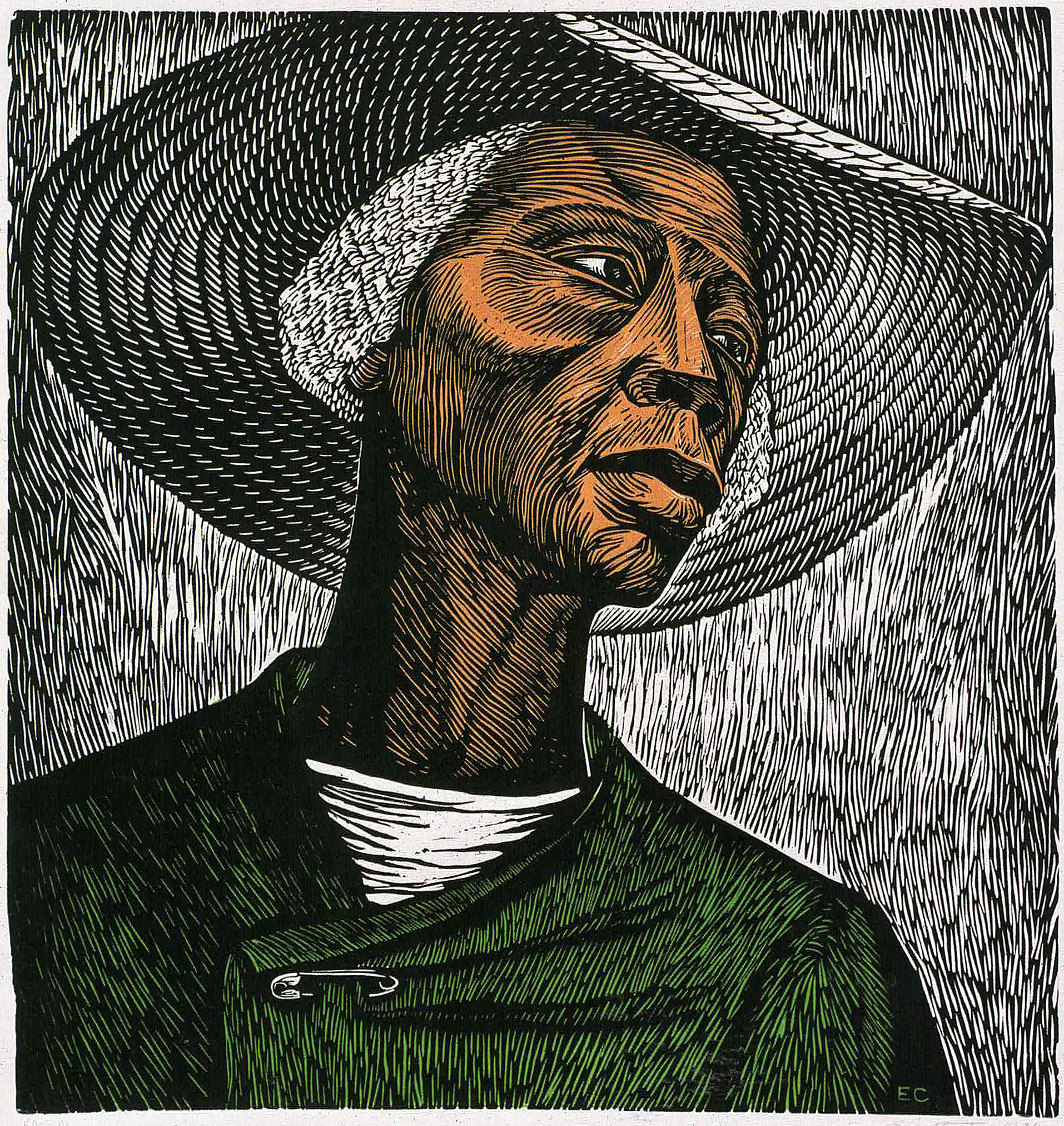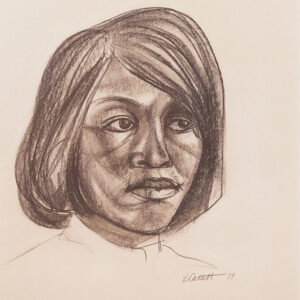 Elizabeth Catlett was born in Washington D.C. and attended Howard University where she studied design, printmaking and drawing. She continued her graduate work at the University of Iowa School of Art and Art History, and in 1940 became the first African American student to receive an M.F.A. in sculpture from the school. Grant Wood instilled in her the idea of working with subjects that she, the artist, knew best. She was inspired to create Mother and Child in 1939 for her thesis. This limestone sculpture won first prize in its category at the American Negro Exposition in Chicago, 1940.
Elizabeth Catlett was born in Washington D.C. and attended Howard University where she studied design, printmaking and drawing. She continued her graduate work at the University of Iowa School of Art and Art History, and in 1940 became the first African American student to receive an M.F.A. in sculpture from the school. Grant Wood instilled in her the idea of working with subjects that she, the artist, knew best. She was inspired to create Mother and Child in 1939 for her thesis. This limestone sculpture won first prize in its category at the American Negro Exposition in Chicago, 1940.
Eager to continue her education, she studied ceramics at the Art Institute of Chicago (1941), lithography at the Art Students League of New York (1942-43), and independently with sculptor Ossip Zadkine in New York (1943). In 1946, Catlett received a Rosenwald Fellowship that allowed her to travel to Mexico City with her husband, Charles White, where she studied wood carving with Jose L. Ruiz and ceramic sculpture with Francisco Zuniga. There, she worked with the Taller de Grafica Popular, (People’s Graphic Arts Workshop), a group of printmakers dedicated to using their art to promote social change. The TGP inspired her to reach out to the broadest possible audience, which often meant balancing abstraction with figuration. After settling in Mexico and later becoming a Mexican citizen, she taught sculpture at the National Autonomous University of Mexico in Mexico City until retiring in 1975.
Catlett’s work has exhibited widely (most recently The Art of Elizabeth Catlett: From the Collection of Samella Lewis was presented at the University of Delaware, Sep 3-Dec 6, 2019) and her work is found in many important collections including the Smithsonian American Art Museum, Washington D.C.; Museum of Modern Art, NY; the Metropolitan Museum of Art, NY, and the Schomburg Center for Research in Black Culture, NY.












